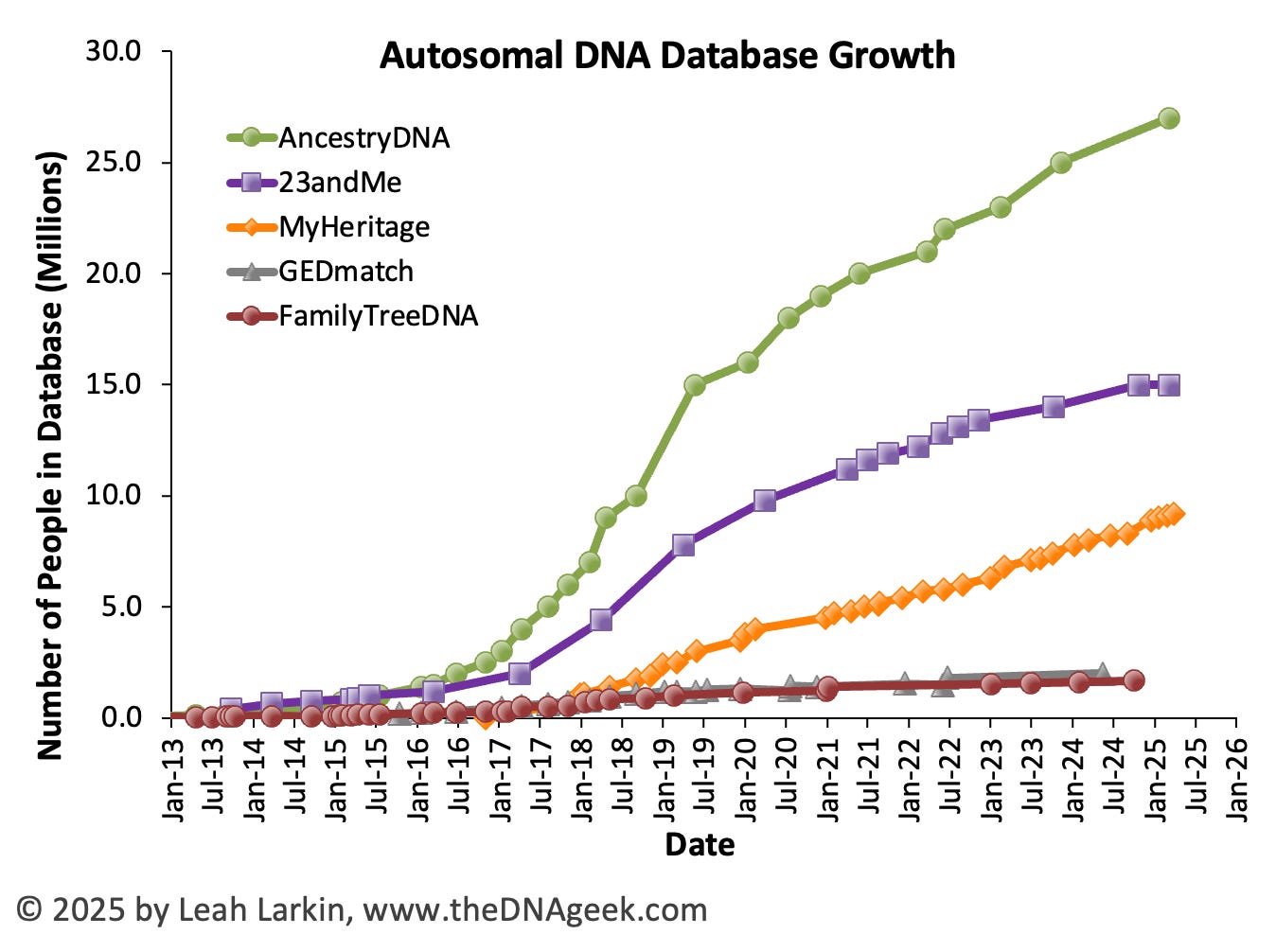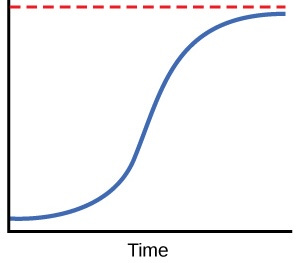How Are Our Databases Doing?
There are now more than 53 million tested DNA kits, and growth has been steady for the past 5 years.
Periodically, I plot the autosomal database sizes to track trends in DNA testing over time. These plots are available for anyone to use in their genealogy presentations, with attribution.
New information was released at the recent RootsTech 2025 conference, so it's time for an update!
There are now more than 53 million tested DNA kits across the four main DNA testing companies: AncestryDNA, 23andMe, MyHeritage, and FamilyTreeDNA. Of course, not all of those represent unique individuals, because many of us have tested in multiple databases.
Long gone are the heady days of early 2018, when DNA kits were flying off the shelves. By my estimates, from February to March 2018, AncestryDNA alone was adding nearly 28,000 DNA kits per day. Had they continued to grow at that rate, their database would have more than 80 million people in it!
Of course, growth like that was not sustainable; sales would have dropped off no matter what. After all, there are only so many people willing to test.
Image modified from CNX OpenStax, CC-BY4.0
However, the pattern we see does not reflect market saturation. Market saturation would look more like this, with a gradual tapering of growth until everyone who wanted a DNA test already had one.
Instead, we're seeing a new normal. Since the inflection point in mid-2018, AncestryDNA's growth has been slower than before but steady. 23andMe and MyHeritage both slowed around the same time but continued at a steady pace until roughly January 2023, when MyHeritage's growth ticked up a little and 23andMe's ticked down. FamilyTreeDNA and GEDmatch have both seen declines, although it's hard to see on the graph because of the scale.
(Note that we don't have enough recent data to gauge how 23andMe's recent troubles have affected their sales.)
I suspect that the advent of forensic genetic genealogy (FGG) in 2018 and the repeated subsequent scandals caused many—but not all—consumers to rethink DNA testing.
What do you think?




Hi Leah,
These are interesting, but not surprising, statistics.
I agree with you that privacy concerns brought about by press coverage (much overblown, in my opinion) surrounding forensic genetic genealogy.
I think the recent general distrust of technology has also had some effect.
I'm not sure what the answer is going to be. The very reasons we are all excited about advances in genetic genealogy drive privacy concerns among the public.
Hi Leah - Your 'autosomal database size over time' posts always make for interesting reading. Thanks for taking the time to plot these. From a personal observation, I am still getting a steady increase of matches in most places but do tend to get more additions on Ancestry. Notably, I have continued to get new matches at 23andMe since the 'recent troubles'. I am also coming across more people who have reservations about testing these days than in the past.